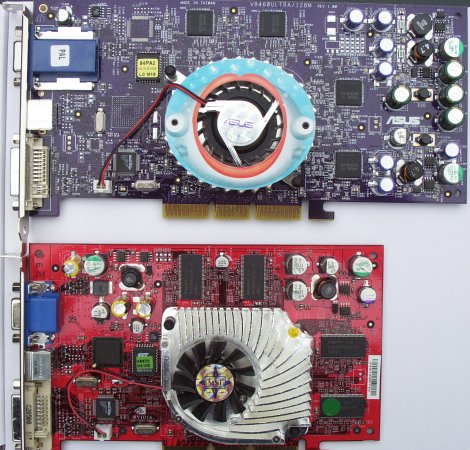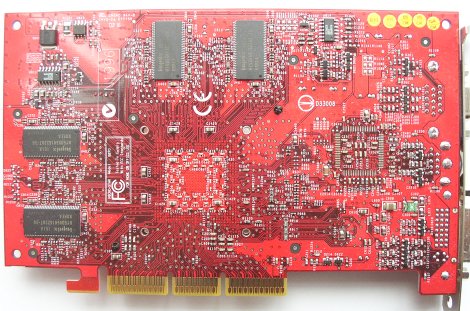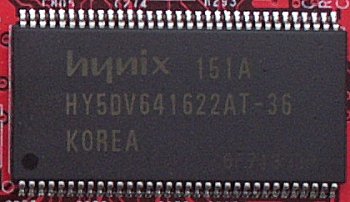The Card
|
The very first aspect to mention is the relative size of the MSI Ti 4200. As you can see from the above picture, it's around the same size as a standard Geforce3, therefore far smaller than the oversized Ti 4600 pictured directly above it. I personally prefer the smaller size as the Ti 4400/4600 cards usually take some fitting into a standard case. The next thing that immediately grabs your attention is MSI's trademark red PCB colour. It adds a touch of class to the whole card. Therefore it comes as a surprise that the MSI Ti 4600 we reviewed recently was outfitted with the generic green PCB colour. To meet a lower projected price-point than its brethren, certain physical changes have had to be enforced. Firstly, its based on a 6-layer PCB as opposed to the 8-layer construction of the 4400/4600 varieties. Having said that, the MSI Ti 4200 felt just as solid to the touch. The lower price-point also dictates lower clock frequencies. Our MSI Ti 4200 was stated to operate with 250MHz / 500 MHz DDR core and memory clocks, comfortably lower than the 300/650 clocks of the flagship Ti 4600.
Being a Geforce3-sized video card, the layout of the MSI is quite busy. There isn't that much board estate to work with. The lack of capacitors on the MSI Ti 4200 tell us that power regulation at lower clock-speeds is not as imperative as the higher clocked Ti 4400/4600 cards, this is how we can have a card of Geforce3 proportions yet one that contains Geforce4 Ti power.
Another reason why this video cad in particular may arrive with a low street price is due to it being equipped with only 64MB of 3.6ns DDR memory. As has been previously mentioned, the Ti 4200 is the budget Geforce4 Ti video card. With this being the case, the option of having either 64MB or 128MB of on-board memory is a sensible one. MSI have gone with 64MB in the form of 8 x 8MB modules. The memory is provided by Hynix, and effectively rated to run at 555MHz. Note that the memory is not the new BGA format found on the newer cards. The fact that NVIDIA have chosen to run at 500MHz and not at the rated speed of 555MHz, tells us they're being their usual conservative self. Also, due to a mind on keeping overall costs down, the memory is left bare with no additional cooling present, we'll see how much of a handicap this is later. |













